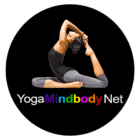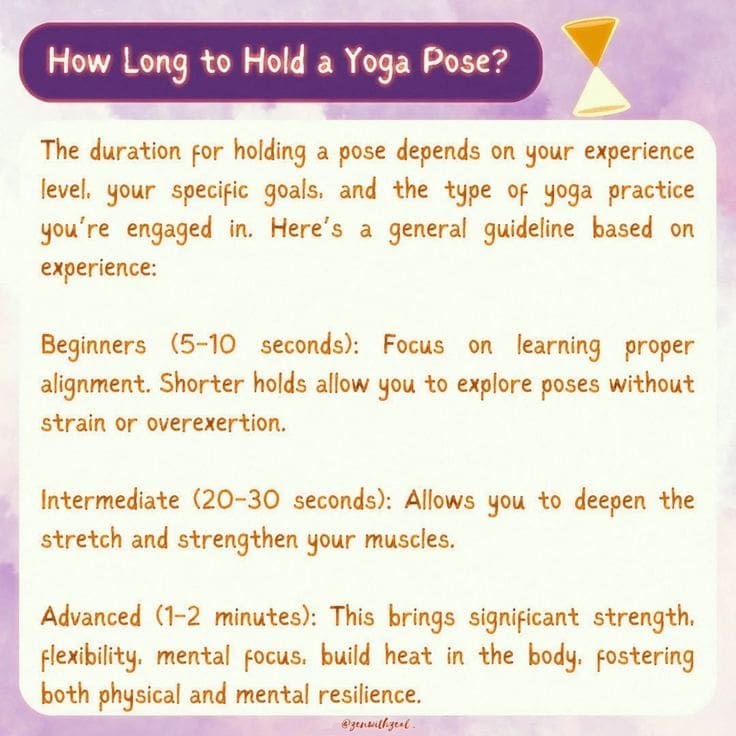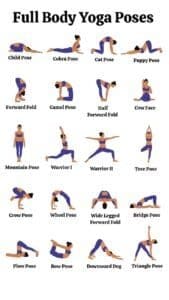Yoga practice frequency plays a crucial role in determining how quickly and deeply you experience the benefits of yoga. Whether you’re new to the practice or looking to deepen your routine, understanding how often to practice can help you achieve better results physically, mentally, and emotionally.
The Importance of Consistent Yoga Practice
Consistency is key when it comes to yoga. Practicing regularly not only helps you build strength and flexibility, but it also enhances your mental clarity and emotional stability. Regular practice can lead to more profound changes in both body and mind, allowing you to connect with your inner self and external environment.
Physical Benefits of Regular Yoga Practice
Practicing yoga frequently can lead to significant improvements in your physical health. Here’s how:
- Increased Flexibility: With consistent practice, your muscles stretch and lengthen, making it easier to move through daily activities without discomfort.
- Improved Strength: Many yoga poses require you to bear your body weight in different ways, which helps to build muscle strength over time.
- Enhanced Balance: Regular practice improves your coordination and balance, reducing the risk of falls and injuries.
Mental and Emotional Benefits
Yoga is not just about physical postures. The mental and emotional benefits are equally compelling.
- Stress Reduction: Regular yoga practice can lower cortisol levels, which reduces stress. Incorporating breathing exercises and meditation can amplify this effect.
- Improved Focus: Practicing yoga sharpens your concentration and awareness, allowing you to be more present in your daily activities.
- Emotional Stability: Connecting your breath with movement helps to release pent-up emotions and fosters a sense of calm.
How Often Should You Practice Yoga?
Understanding your ideal yoga practice frequency depends on your goals, fitness level, and lifestyle. Determining the right frequency for your yoga practice can depend on various factors, including your fitness level, lifestyle, and personal goals. Here’s a breakdown to help you figure it out.
Daily Practice: Ideal for Many
Practicing yoga every day can be incredibly beneficial. You might find:
- Short Sessions: You don’t have to dedicate hours. Even 20-30 minutes daily can yield positive results.
- Building a Routine: Establishing a morning or evening routine can make yoga a natural part of your day.
3-4 Times a Week: A Balanced Approach
If daily practice feels overwhelming, practicing 3-4 times per week is an excellent option:
- Flexibility: This frequency gives you room to integrate yoga into your life while also allowing for rest and recovery days.
- Moderate Engagement: You’re likely to experience consistent benefits without the pressure of daily practice.
Once a Week: A Starting Point
If you’re new to yoga or have a busy schedule, starting with once a week can still be beneficial:
- Foundation: Attending a class once a week can help you learn the basics and gain confidence.
- Building Habit: Over time, you may find yourself wanting to increase your frequency as you start to enjoy the benefits.
Listening to Your Body
Regardless of how often you choose to practice, it’s vital to listen to your body. Yoga is about self-awareness, and understanding your limits can prevent injury and promote longevity in your practice.
Signs You Need More Rest
- Fatigue: If you’re feeling exhausted after a session, it may be a sign to scale back.
- Soreness: Persistent soreness can indicate that your body needs time to recover.
Recognizing When to Push Yourself
- Eager to Practice: If you’re enthusiastic about practicing more, it’s often a good sign to do so.
- Feeling Strong: When you feel capable and energized, it’s a great time to challenge yourself with more frequent practices.
Types of Yoga and Their Frequency
Your ideal yoga practice frequency can vary based on the style you choose and your energy levels. Different styles of yoga may call for varied frequency depending on their intensity and objectives.
Hatha Yoga
This gentle style focuses on basic postures and breathwork.
- Recommended Frequency: 2-3 times a week for beginners and up to daily for enthusiasts.
Vinyasa Yoga
A more dynamic style, vinyasa links breath with movement, keeping you engaged.
- Recommended Frequency: 3-5 times a week to build stamina and strength.
Ashtanga Yoga
A rigorous style that follows a set series of postures, Ashtanga is both challenging and rewarding.
- Recommended Frequency: 5-6 times a week for dedicated practitioners.
Restorative Yoga
Focusing on relaxation, restorative yoga uses props to support the body.
- Recommended Frequency: This can be done as often as needed, even daily, especially during stressful times.
Creating a Schedule That Works for You
Tailoring your yoga practice frequency to your weekly routine makes it easier to stay consistent. Finding a routine that fits your lifestyle can help you stick with yoga for the long term. Consider these tips:
Assess Your Weekly Schedule
Take a look at your week, and identify times that can consistently be dedicated to yoga.
- Early Mornings: This can be a peaceful time to practice before the hustle of the day begins.
- Lunch Break: A mid-day practice can recharge your energy for the second half of the day.
- Evening Wind Down: Practicing in the evening can help relax your mind and body after a long day.
Make it Enjoyable
Choose styles and classes that excite you.
- Variety: Mixing up styles can keep your practice fresh and engaging.
- Community Classes: Joining a group can add fun and motivation to your yoga journey.
Benefits of Joining a Class vs. Practicing at Home
Deciding whether to practice at home or join a class can impact your yoga experience distinctly.
Benefits of Class Participation
- Guidance: Instructors can provide feedback and adjustments to ensure you’re practicing safely.
- Community: Being with others can offer encouragement and support as you advance.
The Home Practice Advantage
- Flexibility: You can practice whenever it fits into your schedule, which is especially beneficial for busy lives.
- Personalized Space: You can create a tranquil environment tailored to your preferences.
Incorporating Other Forms of Exercise
Mixing yoga with other forms of exercise can enhance your overall fitness and keep your routine diverse.
Strength Training
Pairing yoga with strength training can help build muscle while promoting flexibility and recovery.
- Balanced Routine: This can ensure a well-rounded approach to fitness, targeting different body systems.
Cardio Exercises
Cardiovascular activities improve heart health, and combining these with yoga can elevate your overall stamina.
- Be Mindful: It’s vital to schedule yoga sessions around your cardio workouts to allow for recovery.
Active Rest Days
On days when you feel the need to rest but still want movement, consider a gentle yoga practice.
- Restorative or Yin Yoga: These styles are excellent for recovery while allowing you to still engage with your practice.
Tracking Your Progress
Monitoring your yoga journey can be both motivating and helpful in establishing a consistent practice.
Keeping a Journal
Documenting your experiences can reveal patterns and growth.
- Reflect: Write about what you feel after each session—physically and mentally.
Setting Goals
Having clear goals can provide direction and purpose in your practice.
- Short-term Goals: Focus on achieving specific poses or improving strength and flexibility.
- Long-term Goals: Consider what you hope to achieve through your yoga practice over months or years.
Dealing with Challenges
Every journey has its ups and downs. Anticipating challenges can help you stay committed to your practice.
Time Constraints
Life can get busy, making it hard to fit in yoga.
- Short Sessions: Even a 10-minute session can be effective. Just 10 minutes of focused breathing or stretching can provide immense relief and connection.
Motivation
Maintaining motivation can sometimes feel difficult.
- Mix It Up: Try new classes, styles, or even online sessions to keep things exciting.
Building a Home Practice
Creating a personal yoga space can enhance your motivation and commitment.
Designating a Space
Find a corner in your home where you can roll out your mat and feel comfortable.
- Minimal Distracting: Keep this space clear of clutter for a peaceful environment.
Gathering Props
Props can aid your practice and make certain poses more accessible.
- Essential Props: Consider investing in a yoga mat, blocks, straps, and blankets to support your practice.
Conclusion
Your ideal yoga practice frequency may change over time, but staying consistent and listening to your body ensures lasting benefits. Determining the frequency of your yoga practice is deeply personal and can adapt to your changing life circumstances. Whether you decide to practice daily, a few times a week, or even once a week, the key is to be consistent and listen to your body.
Yoga is a journey, and cultivating a routine that feels good for you will allow for the profound benefits of the practice to unfold. Ultimately, finding joy in your practice is what will keep you coming back to your mat time and time again.
Disclaimer
The content is purely informative and educational in nature and should not be construed as medical advice. Please use the content only in consultation with an appropriate certified medical or healthcare professional



